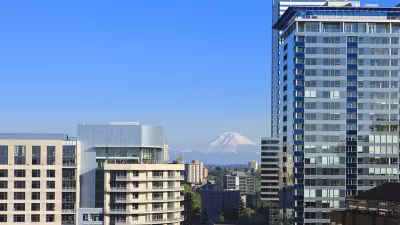The center cannot hold.

The U.S. Census Bureau this week announced the new center of population for the United States s a location near Hartville, a town of about 600 people in central southern Missouri.
The new center of population balance for the country is based on the 2020 Census population of 331.4 million, according to a Census Bureau press release announcing the change. The tradition of calculating the center of the country's population dates back to 1790, when the center was located in Kent County, Maryland, 23 miles east of Baltimore. The movement of the center across the decades tracks the migration of the U.S. population south and west.
The Census Bureau also calculates centers of population for each state, county, census tract and census block group, all of which can be found at the Center of Population webpage.
An article by Summer Ballantine for the Associated Press provides news coverage of the announcement.
FULL STORY: Census Bureau Announces Hartville, Missouri, as “Center of Population” for the United States

Maui's Vacation Rental Debate Turns Ugly
Verbal attacks, misinformation campaigns and fistfights plague a high-stakes debate to convert thousands of vacation rentals into long-term housing.

Planetizen Federal Action Tracker
A weekly monitor of how Trump’s orders and actions are impacting planners and planning in America.

In Urban Planning, AI Prompting Could be the New Design Thinking
Creativity has long been key to great urban design. What if we see AI as our new creative partner?

Cal Fire Chatbot Fails to Answer Basic Questions
An AI chatbot designed to provide information about wildfires can’t answer questions about evacuation orders, among other problems.

What Happens if Trump Kills Section 8?
The Trump admin aims to slash federal rental aid by nearly half and shift distribution to states. Experts warn this could spike homelessness and destabilize communities nationwide.

Sean Duffy Targets Rainbow Crosswalks in Road Safety Efforts
Despite evidence that colorful crosswalks actually improve intersection safety — and the lack of almost any crosswalks at all on the nation’s most dangerous arterial roads — U.S. Transportation Secretary Duffy is calling on states to remove them.
Urban Design for Planners 1: Software Tools
This six-course series explores essential urban design concepts using open source software and equips planners with the tools they need to participate fully in the urban design process.
Planning for Universal Design
Learn the tools for implementing Universal Design in planning regulations.
Appalachian Highlands Housing Partners
Gallatin County Department of Planning & Community Development
Heyer Gruel & Associates PA
Mpact (founded as Rail~Volution)
City of Camden Redevelopment Agency
City of Astoria
City of Portland
City of Laramie





























